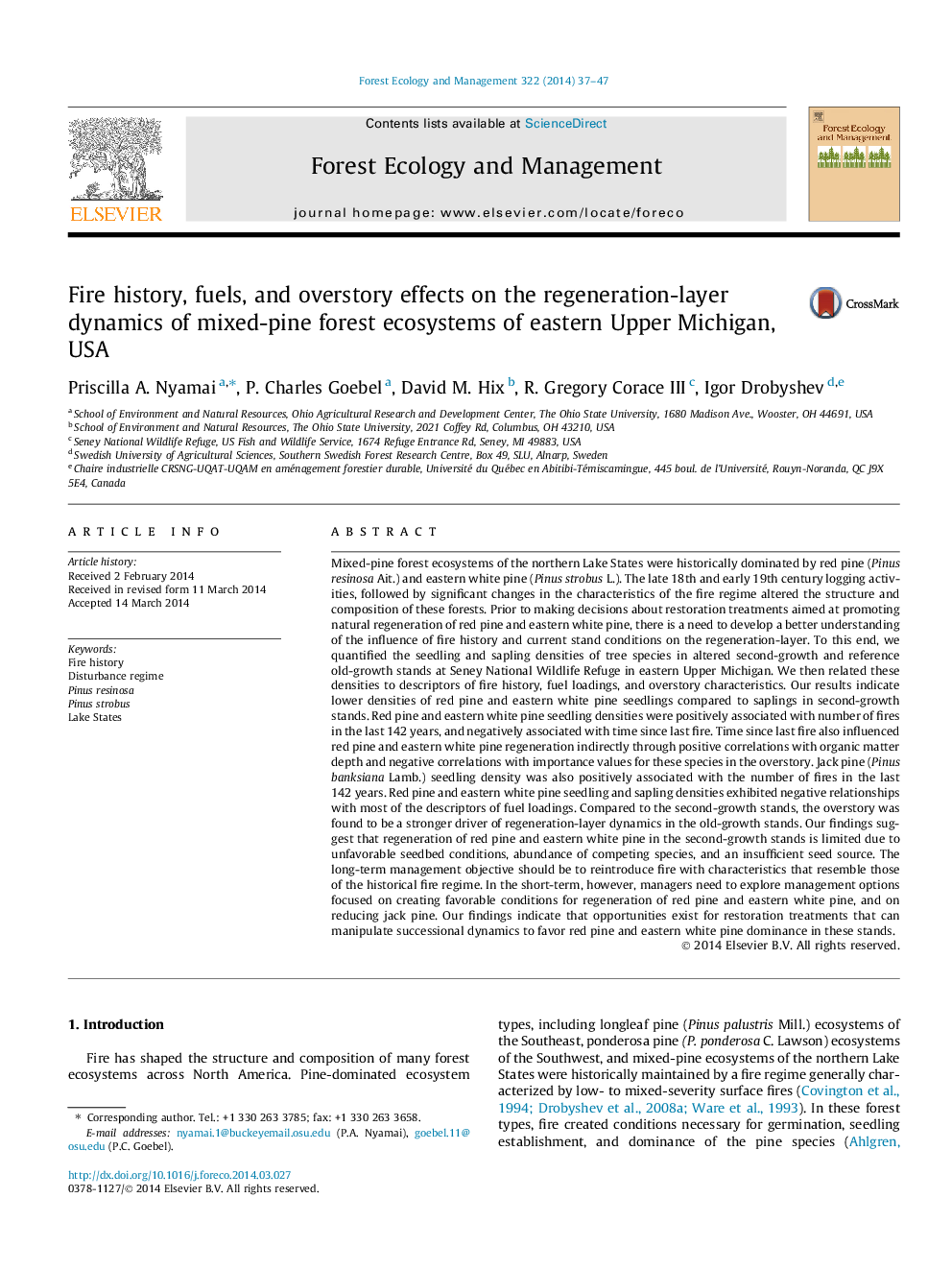| کد مقاله | کد نشریه | سال انتشار | مقاله انگلیسی | نسخه تمام متن |
|---|---|---|---|---|
| 86756 | 159210 | 2014 | 11 صفحه PDF | دانلود رایگان |
• Seedling density positively related to fire occurrence.
• Seedling density negatively related to down fuel biomass.
• Overstory composition has stronger influence in old-growth stands.
• Recruitment limited by seedbed conditions, competition and seed source availability.
• Fire history, fuel loadings and overstory characteristics influence regeneration.
Mixed-pine forest ecosystems of the northern Lake States were historically dominated by red pine (Pinus resinosa Ait.) and eastern white pine (Pinusstrobus L.). The late 18th and early 19th century logging activities, followed by significant changes in the characteristics of the fire regime altered the structure and composition of these forests. Prior to making decisions about restoration treatments aimed at promoting natural regeneration of red pine and eastern white pine, there is a need to develop a better understanding of the influence of fire history and current stand conditions on the regeneration-layer. To this end, we quantified the seedling and sapling densities of tree species in altered second-growth and reference old-growth stands at Seney National Wildlife Refuge in eastern Upper Michigan. We then related these densities to descriptors of fire history, fuel loadings, and overstory characteristics. Our results indicate lower densities of red pine and eastern white pine seedlings compared to saplings in second-growth stands. Red pine and eastern white pine seedling densities were positively associated with number of fires in the last 142 years, and negatively associated with time since last fire. Time since last fire also influenced red pine and eastern white pine regeneration indirectly through positive correlations with organic matter depth and negative correlations with importance values for these species in the overstory. Jack pine (Pinusbanksiana Lamb.) seedling density was also positively associated with the number of fires in the last 142 years. Red pine and eastern white pine seedling and sapling densities exhibited negative relationships with most of the descriptors of fuel loadings. Compared to the second-growth stands, the overstory was found to be a stronger driver of regeneration-layer dynamics in the old-growth stands. Our findings suggest that regeneration of red pine and eastern white pine in the second-growth stands is limited due to unfavorable seedbed conditions, abundance of competing species, and an insufficient seed source. The long-term management objective should be to reintroduce fire with characteristics that resemble those of the historical fire regime. In the short-term, however, managers need to explore management options focused on creating favorable conditions for regeneration of red pine and eastern white pine, and on reducing jack pine. Our findings indicate that opportunities exist for restoration treatments that can manipulate successional dynamics to favor red pine and eastern white pine dominance in these stands.
Journal: Forest Ecology and Management - Volume 322, 15 June 2014, Pages 37–47
